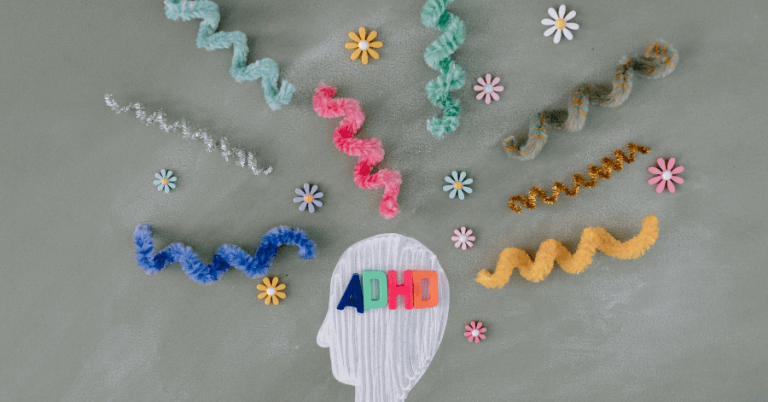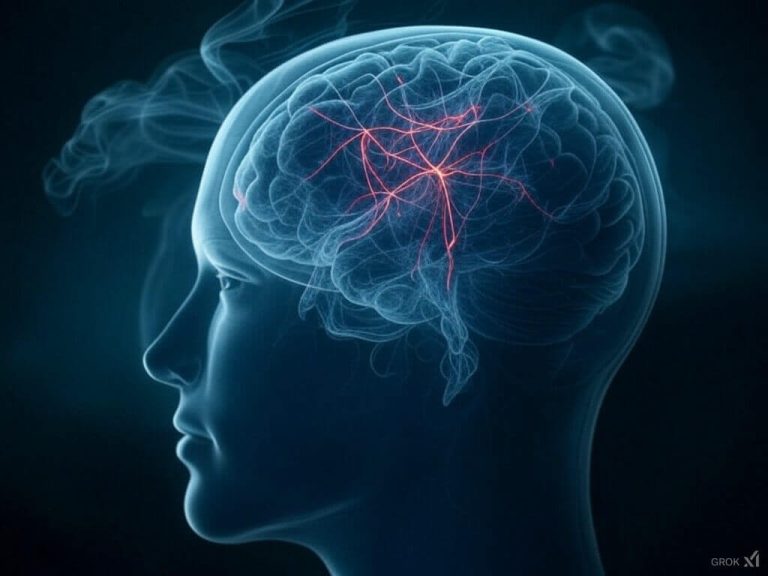We could all benefit from a little more focus; as long as man has been trying to be productive, procrastination has long been our lifelong enemy.
But for some, the ability to focus goes beyond mere procrastination; an estimated 4.4% of adults and 8.7% of children have Attention-Deficit/Hyperactivity Disorder (ADHD), a neurological disorder where an inability to concentrate affects their ability to function efficiently.
Despite being one of the most researched disorders, myths and misleading information remain. While ADHD’s negative effects can be debilitating, plenty of treatments have proven effective at treating it. What’s more, ADHD has been shown to induce hyperfocus in some affected individuals, resulting in a superhuman ability to focus intently on something enjoyable.
This article aims to provide the most complete summary of ADHD and its symptoms, causes, and treatments, according to the latest neurological research. While prescription drugs still dominate, other non-stimulants and natural compounds have shown great promise in modulating their detrimental effects.
So sit back, grab a coffee, and muster all the focus you can.
What is ADHD?
Attention-Deficit/Hyperactivity Disorder (ADHD) is a neurodevelopmental disorder that commonly affects children but often continues into adulthood, characterized by persistent patterns of inattention, impulsivity, and hyperactivity that interfere with daily functioning and development.
As one of the most common mental disorders affecting children, ADHD affects almost one in ten children, although the degree it affects a person varies widely. While some may never realize they have it, for others, it can lead to mentally crippling conditions that make even basic tasks extremely difficult.
What is the Difference Between ADHD and ADD?
Attention Deficit Disorder (ADD) is now an outdated term, but medical literature dating to the early 1900s used to distinguish ADD as a subtype of ADHD.
Modern Literature, however, mostly refers to ADHD. The current diagnostic criteria outlined in the Diagnostic and Statistical Manual of Mental Disorders (DSM-5) no longer distinguish between the two. While ADHD is the technically correct term, ADD and ADHD are still often used synonymously.
What Causes ADHD?
ADHD is a complex mechanism and still not fully understood, but it is believed to be caused by a combination of genetic and neurobiological factors.
Is ADHD Genetic?
The short answer is yes, ADHD does appear to have a significant genetic component.
This 2016 study “Occurrence of ADHD in parents of ADHD children in a clinical sample” provided some remarkable findings, albeit on a relatively small sample size of 79 children with ADHD and their parents.
Of the 79 children tested, 41.3% of mothers were found to have ADHD, as well as 51% of fathers. Other studies have found a lower effect of around a 10-25% chance of inheriting ADHD from parents.
A 2013 study titled “The heritability of clinically diagnosed Attention-Deficit/Hyperactivity Disorder across the life span” tested a large sample of 59,514 twins, finding that the heritability of ADHD was estimated to be 0.88, meaning that 88% of the variance in ADHD traits can be attributed to genetic factors.
Similarly, the study also found that the heritability of ADHD in adults specifically was 0.72, indicating that approximately 72% of the variance in ADHD traits in adults can be attributed to genetic factors.
Interestingly, shared environmental effects were found to be of minimal importance in the development of ADHD.
Is ADHD Caused by Intelligence (IQ)?
Two common myths surrounding ADHD are that it only affects children and that those with ADHD are simply lazy or the result of undisciplined parenting. While we know these are both incorrect, a third myth has finally been debunked by research, that ADHD is correlated with intelligence.
It has been shown that highly intelligent and functional people have ADHD at rates identical to those with low IQs.
The study “Attention-Deficit/Hyperactivity Disorder in Children With High IQ: Results from a Population-Based Study” found no significant differences in the characteristics of children with ADHD among three IQ groups (high, normal, and low).
While some individuals with ADHD may face challenges in academic settings due to difficulties with focus and organization, they can also possess strengths such as creativity, problem-solving abilities, and high energy levels.
In fact, as we will see later, one common symptom of ADHD is hyperfocus, a state where a person becomes fully engrossed in an activity that captures their interest.
Modern Smartphones and Information Overload
According to Statista, the current number of global smartphone users as of 2023 is 6.92 billion, meaning 86% of the world’s population owns a smartphone. While access to smartphones provides incredible benefits, such as the availability of information and fast and efficient payments, there is no doubt that social media and entertainment can create significant distractions.
Scientists have now begun to question whether this sort of interaction on a regular basis leads to attentional deficits, including increasing levels of ADHD.
While these sorts of distracting technologies are still relatively nascent in a scientific field where long-term studies are performed over decades, preliminary data, such as this cross-sectional study measuring mobile phone use and inattention in 7102 adults, indicate that cell phone use of more than 60 minutes per day is correlated with a decrease in attentional activity.
The theory is that the brain does not do well switching between tasks quickly. In the physical world, the visual senses are tuned to narrow focus on what’s in front of you or the task you are currently performing by reducing focus on less important things, such as what’s around you in your environment.
The problem with smartphones is that all the information is directly in front of you. Every pixel of near-infinite information is constantly within your narrow focus, and the brain struggles to distinguish what information is truly needed.
While still a hypothesis, there could be much to gain from reducing the time we spend distracted on our phones.
The Neural Circuitry of ADHD
While ADHD is known to be largely genetic and unrelated to intelligence, the exact mechanism is thought to be due to a lack of dopamine levels relative to those without ADHD.
The Default Mode Network (DMN) and Task-Positive Networks (TPNs)
The default mode network (DMN) is a network of brain regions active when an individual is not engaged in any specific external task, such as focusing on internal thoughts, self-reflection, or daydreaming.
Task-Positive Networks (TPNs), on the other hand, are areas of the brain that make you goal-oriented and are active when an individual is engaged in a specific task or cognitive process.
In a typical brain, the DMN and TPN see-saw, where one activates as the other quiets. When focusing on a task, for example, the task-positive networks increase in activity while the default mode network decreases in activity.
In those with ADHD, however, these two circuits tend to desynchronize and operate simultaneously. As a result, the brain receives mixed messages of both activation and passiveness, contributing to cognitive impairments and behavioral symptoms such as difficulties with attention, impulse control, and working memory.
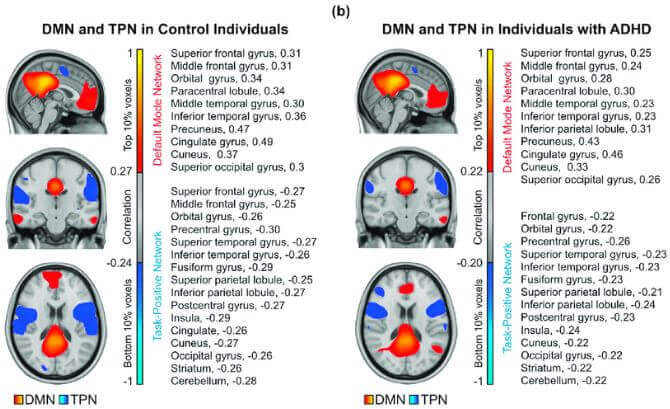
The Low Dopamine Hypothesis
Underlying both DMN and TPNs is dopamine, a neurotransmitter that transmits signals between neurons in the brain.
While known for playing a crucial role in various brain functions and is involved in several crucial processes, such as motivation, reward, movement, attention, and mood regulation, dopamine is thought to be the reason behind the dysregulation of the DMN and TPNs that result in ADHD.
You can think of dopamine as a conductor of an orchestra, signaling to both the DMN and TPNs when to go forte (loud) and piano (quiet). In those with ADHD, however, the conductor tells both to go loud, making the music sound like quite a mess.
When dopamine levels are too low in certain circuits in the brain, it leads to the unnecessary firing of neurons unrelated to the ones needed for the task you are trying to perform.
Essentially, there is insufficient dopamine to manage each of the circuits correctly, and they tend to get lazy and confused and fire out of time (like a confused conductor waving his hands chaotically).
What are the Symptoms of ADHD?
While some of the symptoms of ADHD are clear-cut, many of us will have some symptoms that might make us appear like somebody with ADHD.
You may have some, none, or all of them, each varying in intensity. You may even have many of the symptoms and not have ADHD at all, such is the variance of the subject and the importance of obtaining a proper diagnosis from a trained professional. Having said that, here are the most common symptoms of those with ADHD.
ADHD and Poor Attention and Focus
Neurotransmitters such as dopamine and norepinephrine play a crucial role in regulating attention and focus, meaning those with ADHD, who typically have lower dopamine levels, are more likely to suffer from poor concentration.
ADHD individuals may also struggle to filter irrelevant stimuli and distractions, making it challenging to stay focused on a particular task.
ADHD and High Levels of Impulsivity
The prefrontal cortex (PFC) is involved in executive functions like impulse control, attention regulation, and decision-making. In individuals with ADHD, there is evidence of reduced activation and structural abnormalities in the PFC, leading to difficulties in inhibitory control and impulse regulation.
Because dopamine is involved in reward processing, motivation, and impulse control, reduced dopamine levels may inhibit impulse control by reducing sensitivity to delayed rewards while increasing the preference for immediate gratification, which can contribute to impulsive decision-making.
ADHD Can Make an Individual Easily Annoyed
Dysregulation in neurotransmitters such as dopamine, norepinephrine, and serotonin, which play important roles in regulating mood and emotions, can contribute to emotional dysregulation and increased irritability.
Those with ADHD may also exhibit sensory sensitivity difficulties, meaning they may be more easily overwhelmed by sensory stimuli, such as noise or visual input, which can contribute to irritability.
Challenges with Time Perception
It is well noted that those with ADHD often struggle to manage time by under or overestimating it. Many have trouble organizing their day to meet deadlines, even if it’s as simple as finishing one task before breaking for lunch.
This is especially true for tasks in which someone with ADHD has little interest. For tasks that arouse great interest, however, ADHD can make them more focused, a phenomenon known as hyperfocus.
Likewise, when the threat of a deadline looms so great that it invokes tremendous feelings of fear and urgency, they can become immensely focused, not because they enjoy it, but because the threat of the deadline is stronger than the urge to procrastinate.
Poor Spatial Organization Skills
Another notable symptom common to those with ADHD is their poor spatial organization skills, that is, how they organize things in their environment.
When looking at their desk at work, for example, you might notice that their pen holders are at the opposite end of the desk than the paper, which makes little logical sense. To ADHD individuals, however, it makes sense to them in their own way, and they might become irate if anyone were to change it.
Working Memory
Working memory, the cognitive system responsible for temporarily holding and manipulating information, such as a phone number, can be a struggle for us all, but it is especially challenging for those with ADHD.
Impairments in the prefrontal cortex are thought to be behind this, where executive functions, such as holding temporary information, sustaining attention, and inhibiting irrelevant stimuli, are somewhat impaired.
Interestingly, ADHD individuals have been found to have a great memory outside of working memory, especially for past events and longer-term memories.
ADHD Hyperfocus
Many mistakenly believe that people with ADHD can’t focus on anything, which is simply not true. While they do have difficulties focusing on things in which they have little interest, a phenomenon known as hyperfocus can occur in individuals with ADHD when they are invested in something that they enjoy or care about.
A dysregulation in dopamine is thought to be the cause of this, which upsets the delicate balance between the brain’s default mode network and the task-positive networks that control attention and mind-wandering.
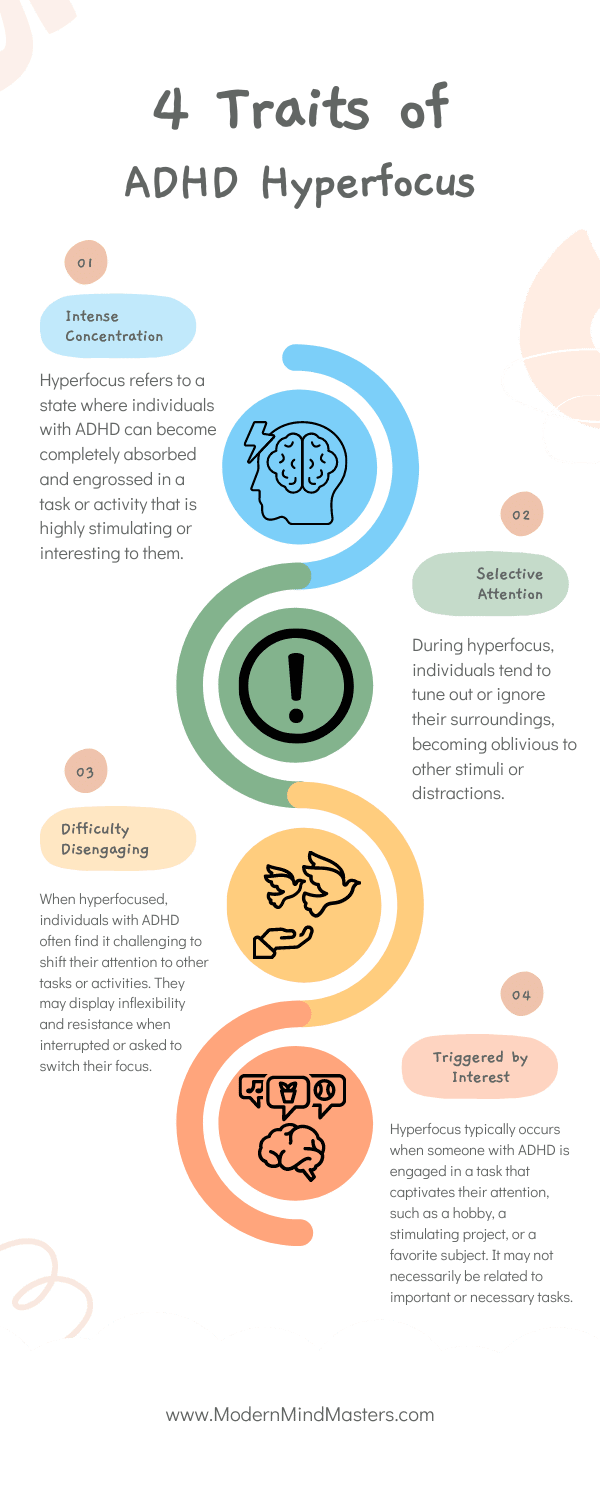
ADHD Paralysis
ADHD paralysis, also known as decision paralysis or analysis paralysis, is a term used to describe the difficulty individuals with ADHD may experience when faced with making decisions or taking action.
It refers to a state of being overwhelmed or stuck due to the abundance of choices, options, or tasks, leading to inaction and procrastination.
This paralysis can arise from the challenges associated with executive functions, such as prioritization, organization, and initiating activities, manifesting as difficulty in starting and completing tasks, feeling overwhelmed by the decision-making process, and getting stuck in a cycle of indecisiveness.
ADHD Rejection Sensitive Dysphoria
ADHD Rejection Sensitive Dysphoria (RSD) is an intense emotional response characterized by heightened sensitivity to perceived rejection, criticism, or failure. While able to affect anyone, it is most commonly found in those with ADHD.
An exaggerated emotional reaction to situations that involve potential rejection is the most common reaction, even if the rejection is not explicitly stated or intended, which can be triggered by various social interactions, such as receiving constructive feedback, being overlooked, or facing perceived criticism.
The symptoms of RSD can include intense feelings of sadness, anger, anxiety, or worthlessness, significantly impacting self-esteem, social relationships, and overall emotional well-being.
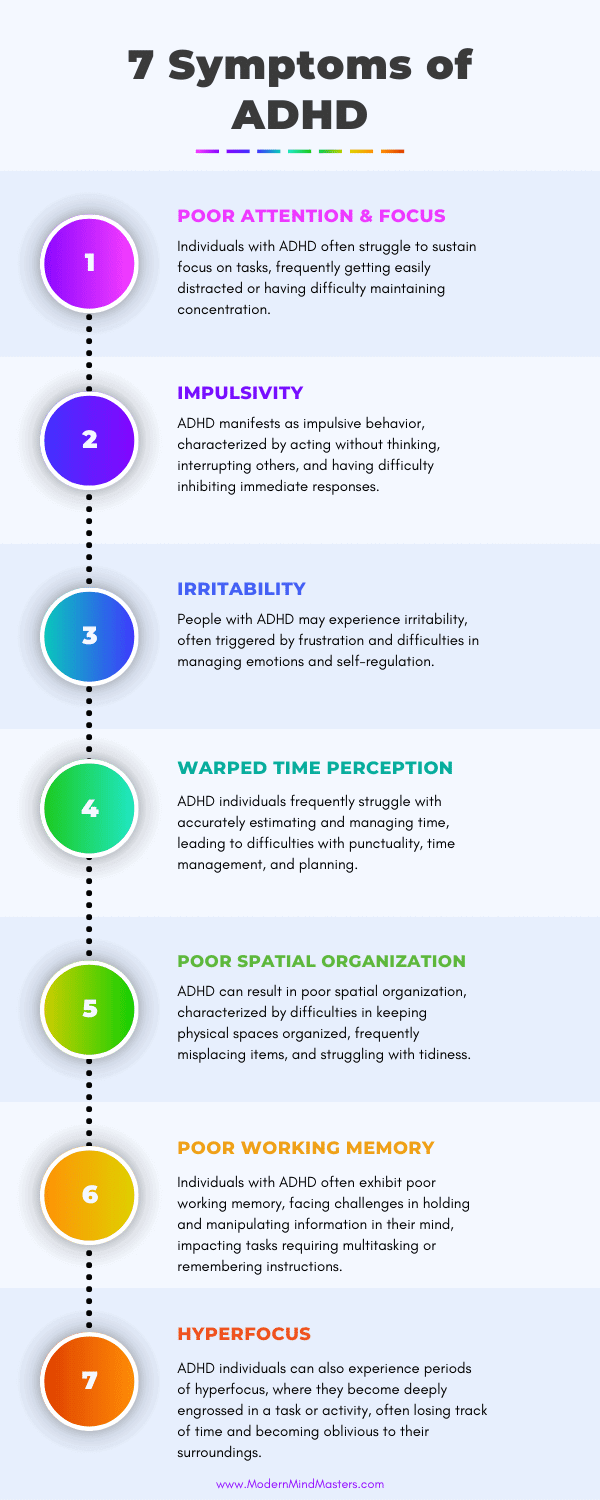
How to Get Diagnosed/Tested for ADHD
If you believe you may exhibit some symptoms of ADHD that affect your ability to perform, you must seek professional advice from a qualified professional in the appropriate field, which will differ slightly depending on your region.
The following steps generally outline the process:
- Schedule an appointment with a healthcare professional specializing in mental health.
- During the evaluation, discuss your symptoms, medical history, and concerns.
- The healthcare provider will gather information from different sources, including interviews and input from family or friends.
- They will refer to the diagnostic criteria outlined in the DSM-5 to determine if your symptoms meet the criteria for ADHD.
- You may be asked to complete ADHD-specific rating scales or questionnaires to assess symptom severity.
- A physical examination may be conducted to rule out other potential causes.
- The healthcare provider may collaborate with other professionals for further insights if necessary.
- Follow-up visits will be scheduled to discuss the findings, receive the diagnosis, and explore treatment options.
ADHD Treatments
From prescription drugs to transcranial magnetic stimulation, the list of available treatments for ADHD is just as varied as the disorder itself. The best course of treatment will depend on the specific symptoms and conditions of each individual.
Prescription Drugs for ADHD
Prescription drugs come in many forms, most commonly Ritalin, Adderall, and Modafinil, all of which target specific neuromodulators and chemicals such as dopamine, serotonin, norepinephrine, and acetylcholine.
While Ritalin has historically been the most prescribed drug, Adderall and Modafinil are increasing in popularity because of their ability to better regulate dopamine, whereas Ritalin tends to provide one big hit that may be too much for most.
As much as these drugs work in increasing dopamine and reducing the effects of ADHD, they all come with side effects that can offset their benefit.
Because of the way dopamine works, with each successful hit of the drug, the brain craves higher quantities to achieve the same sense of euphoria, which can lead to addiction when overused.
These drugs are also vasoconstricting (they narrow or constrict blood vessels), which can lead to negative cardiac effects, increased heart rate, and difficulties getting an erection.
While these powerful drugs can improve ADHD symptoms, the potential side effects highlight the importance of getting the correct dosages for an individual from a qualified medical professional.
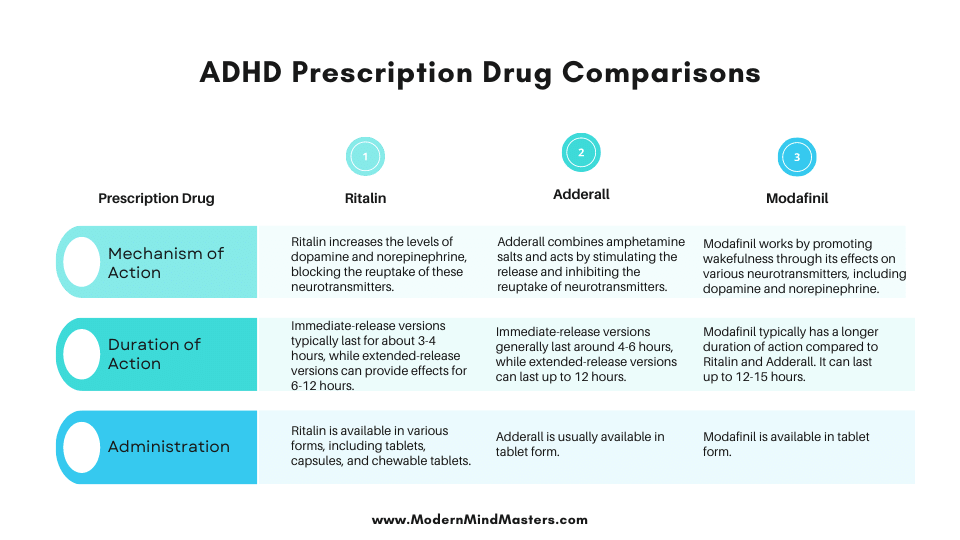
Non-Stimulant Natural Supplements to Treat ADHD
Because of the potential determinants of prescription drugs, there is a great interest in non-stimulating and natural supplements that are safe to take frequently for those experiencing more mild symptoms of ADHD.
Omega-3, DHA, and Phosphatidylserine for ADHD
Omega-3 fatty acids have been shown to help modulate symptoms of ADHD. 300 mg of docosahexaenoic acid (DHA) was found to be the threshold for improving attentional effects.
Phosphatidylserine, a naturally occurring phospholipid found in cell membranes has also been shown to improve the effects of ADHD. Just two months at 200mg per day was shown to reduce effects in children (no study was performed on adults, however).
Studies also show that both DHA and phosphatidylserine, which can be taken in capsule form, work synergistically together to enhance their modulating effects.
L-Tyrosine and Phenylethylamine (PEA)
Two more over-the-counter compounds, L-Tyrosine and phenylethylamine (PEA), have shown promise in helping to modulate some of the negative effects of ADHD.
L-Tyrosine, an amino acid, acts as a precursor to dopamine, so it should come as no surprise that people are exploring its effects on ADHD.
While research has shown its ability to increase focus and attention, the dosage does appear tricky to dial in; scientific literature shows dosages ranging from 200 mg to 1200 mg. It should also be used with great caution, especially for those with any underlying psychiatric or mood disorder (in which too much dopamine can play a significant role).
Racetams and Nootropil
Racetams are a class of drugs that share a common chemical structure called a pyrrolidone nucleus. They are known for their potential cognitive-enhancing effects and have been studied for their potential use in improving memory, attention, and overall cognitive function.
Noopept, a synthetic nootropic compound (colloquially known as “smart drugs”) that is derived from the racetam family, has shown some promise in improving focus because of the way they tap into the cholinergic system, the network of neurons in the brain that use the neurotransmitter acetylcholine (ACh) for communication.
Nootropil, taken at 70 mg daily, resulted in a response rate of 60%, suggesting considerable positive therapeutic effects at higher doses on behavioral, motor, and attention characteristics in children with ADHD.
It is important to note that racetams and nootropics are an emerging science and still require much testing. As a result, they are illegal in many areas, despite being available over the counter in the US. As always, advise a qualified professional before taking any substance.
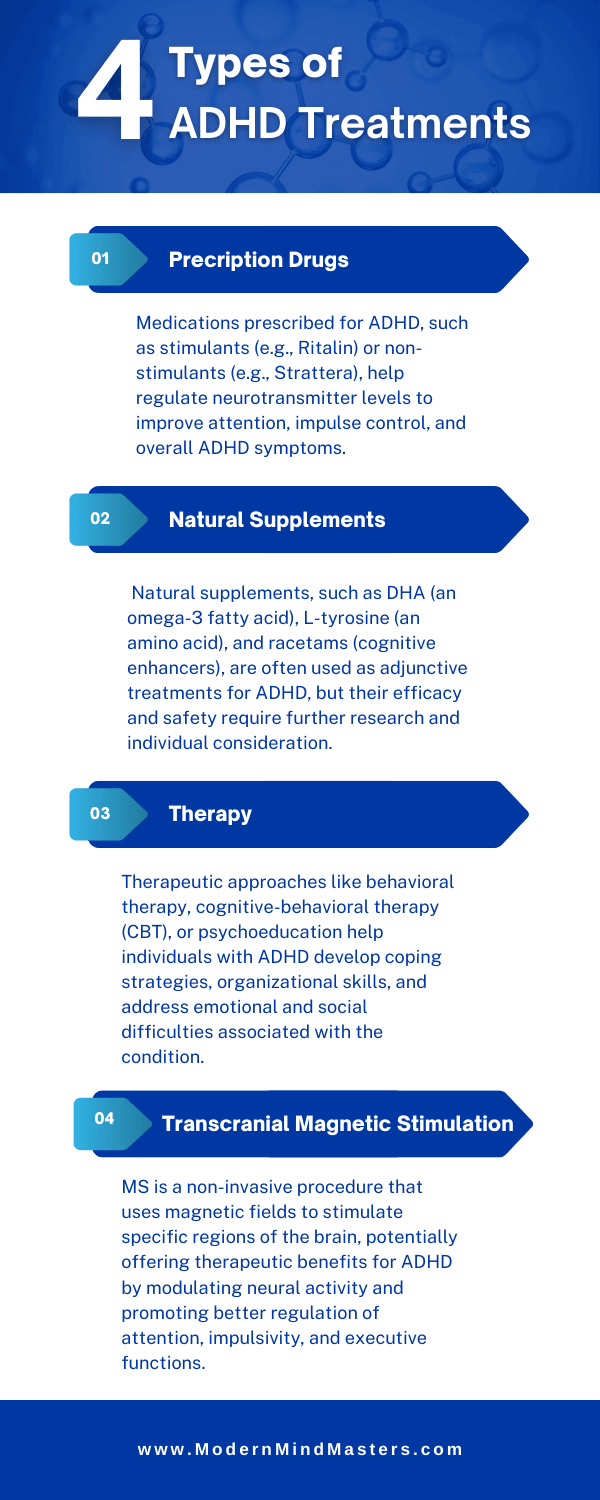
Conclusion
Attention-Deficit/Hyperactivity Disorder (ADHD) affects around 4.4% of adults and 8.7% of children, making concentration a real challenge for many. While the exact causes of ADHD remain somewhat mysterious, researchers believe that genetics and neurobiology play a significant role in its development.
The neural circuitry of ADHD is like a synchronized dance gone wrong. The default mode network (DMN) and task-positive networks (TPNs) are supposed to take turns, but in ADHD, they clumsily stumble together, causing cognitive impairments and behavioral symptoms.
Low dopamine levels are likely the culprit behind this brain fog. Dopamine, the conductor of our mental orchestra, loses its rhythm in individuals with ADHD, leading to a messy cacophony of mixed signals.
ADHD symptoms can be quite a handful. Poor attention, impulsive decisions, and easily getting annoyed by the world can make you feel trapped in a game of emotional whack-a-mole.
Luckily, there’s a glimmer of hope amidst the chaos. Prescription drugs like Ritalin, Adderall, and Modafinil attempt to bring order to the brain’s chemical symphony. However, they come with side effects and the risk of addiction, so it’s crucial to find the right dosage under professional guidance.
For those seeking a more natural approach, supplements like omega-3, DHA, and phosphatidylserine offer a gentler modulating touch.
While ADHD may throw curveballs at your attention span, it’s important to remember that individuals with ADHD possess unique strengths too. Creativity, problem-solving abilities, and bursts of hyperfocus are their secret weapons, hidden amidst the chaos.
So, if ADHD has turned your focus into a runaway train, fear not! Understanding its neural circuitry and exploring treatment options can help you regain control. The good news is that if you made it this far, you are already doing better than most!
FAQs
What causes ADHD?
ADHD appears to arise from a mix of genetic and neurobiological factors. Studies show it is highly heritable, and brain imaging suggests differences in dopamine signaling and in how key networks (the Default Mode Network and Task-Positive Network) switch on and off, affecting attention, impulse control, and executive function.
What are the main symptoms of ADHD in children and adults?
Common ADHD symptoms include poor attention and focus, impulsivity, hyperactivity, irritability, time-management problems, disorganization, weak working memory, hyperfocus on interesting tasks, and emotional sensitivity to rejection or criticism. Symptoms must be persistent and impair daily life to meet diagnostic criteria.
How is ADHD treated?
ADHD treatment usually combines prescription medications (such as stimulants like Ritalin, Adderall, or Modafinil) with behavioral strategies and lifestyle changes. Some people also use non-stimulant options and natural supplements like omega-3s, DHA, phosphatidylserine, or certain nootropics under professional guidance to help modulate symptoms.
